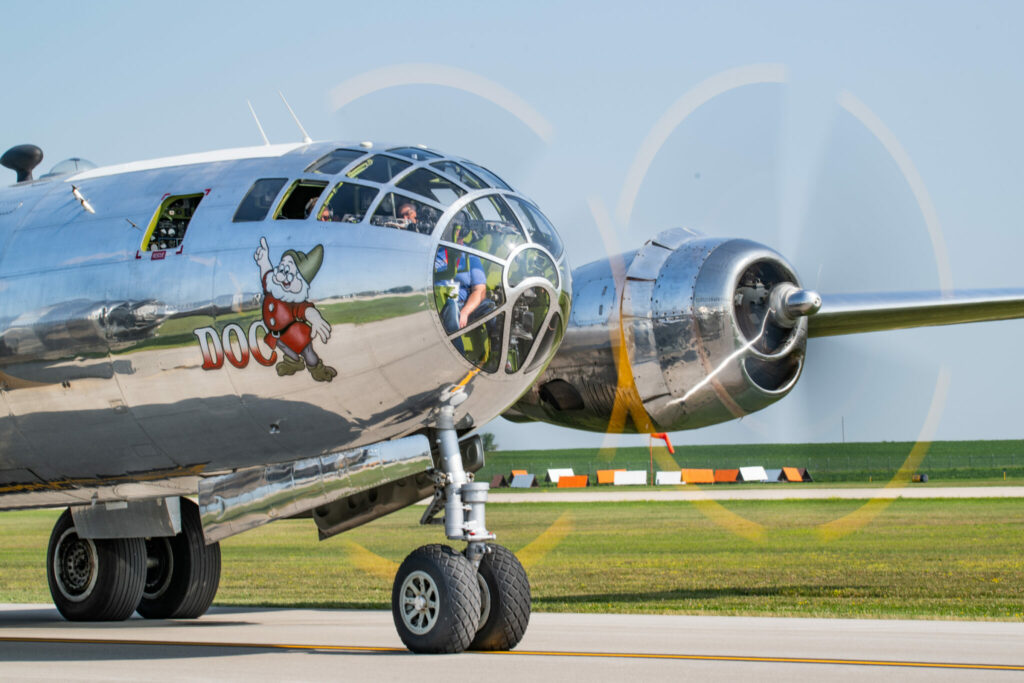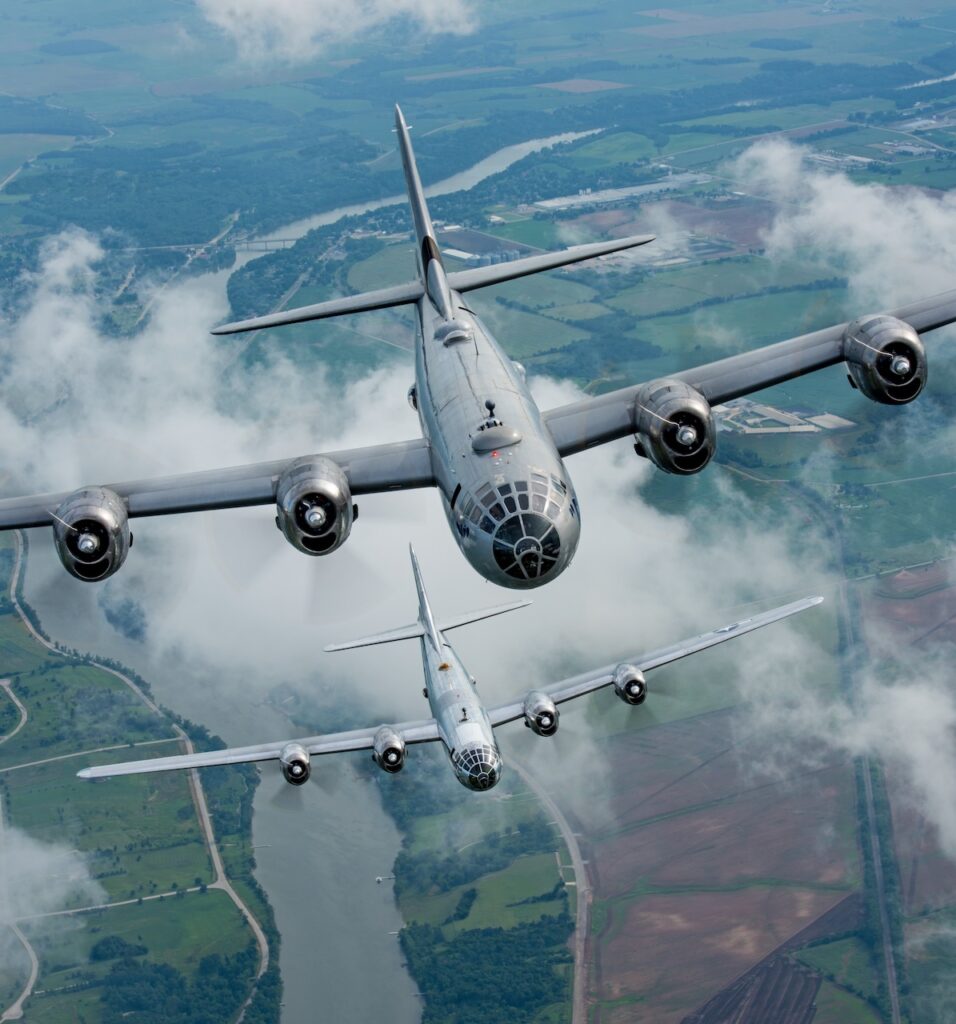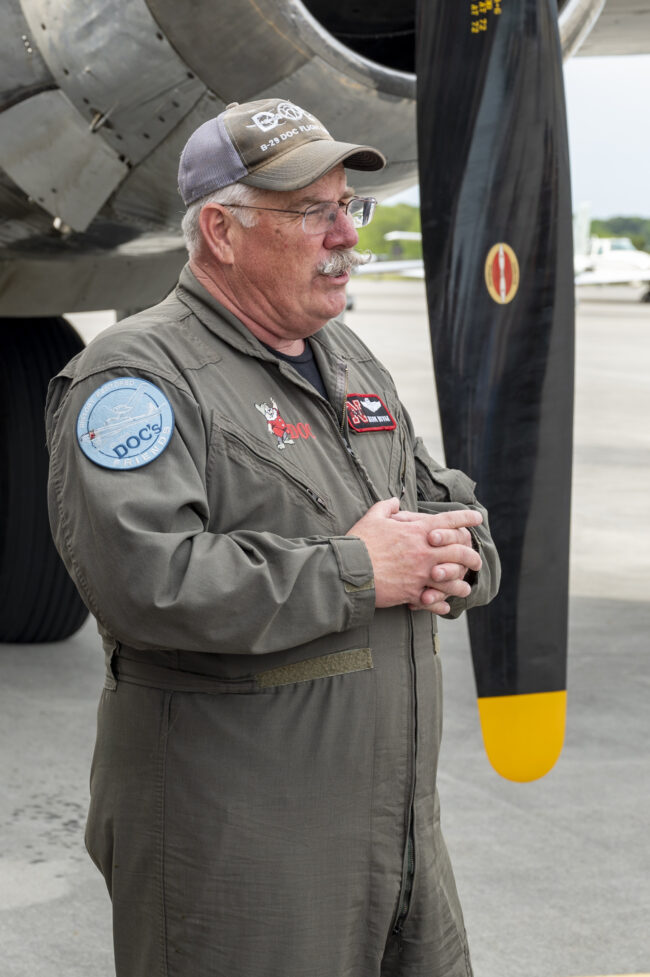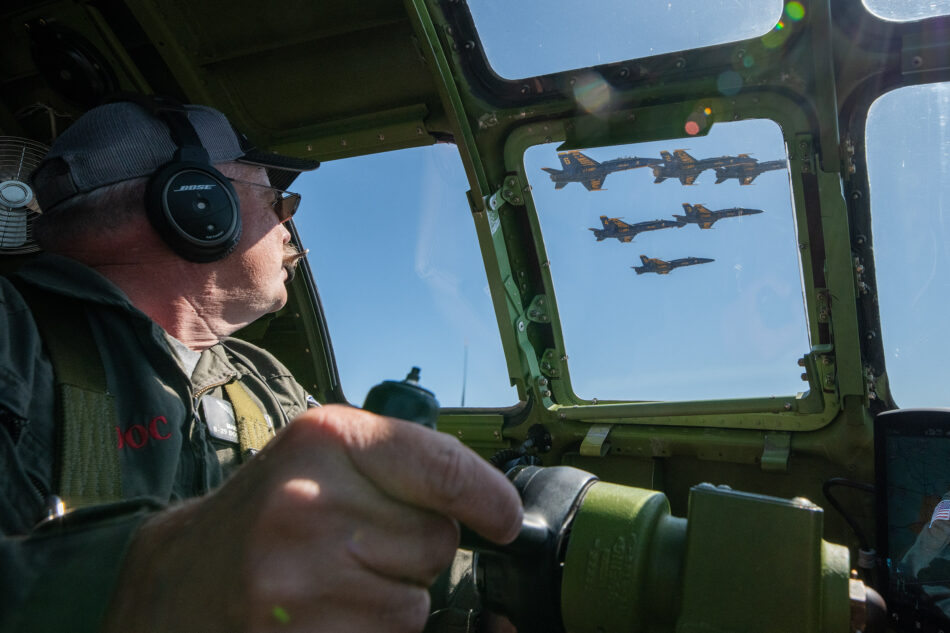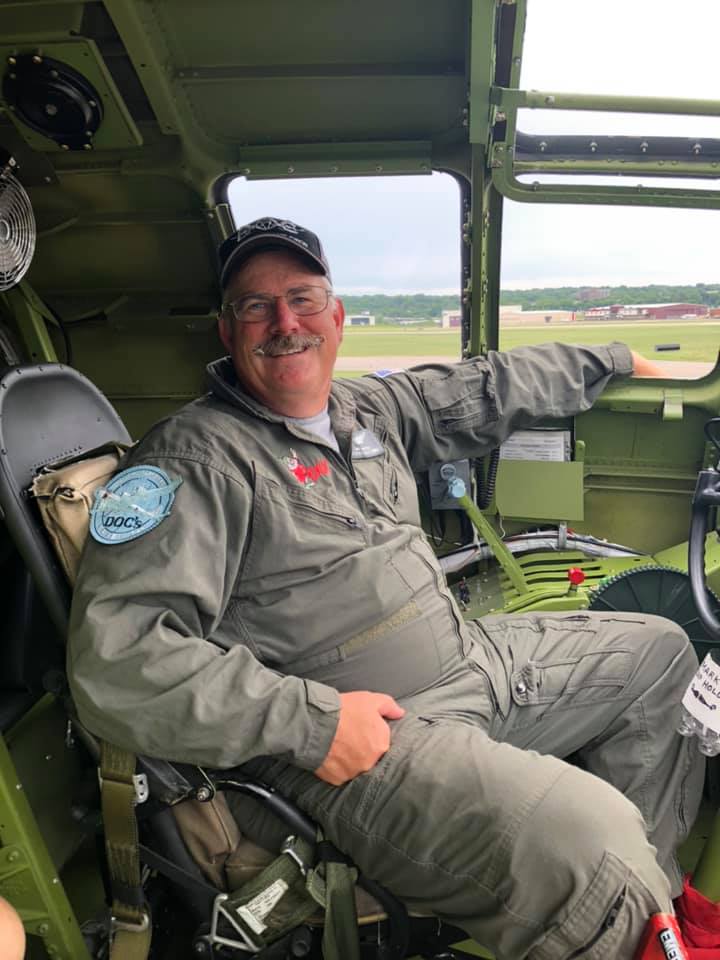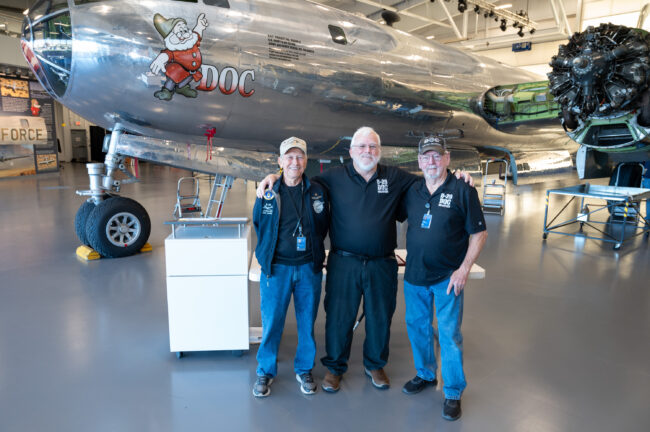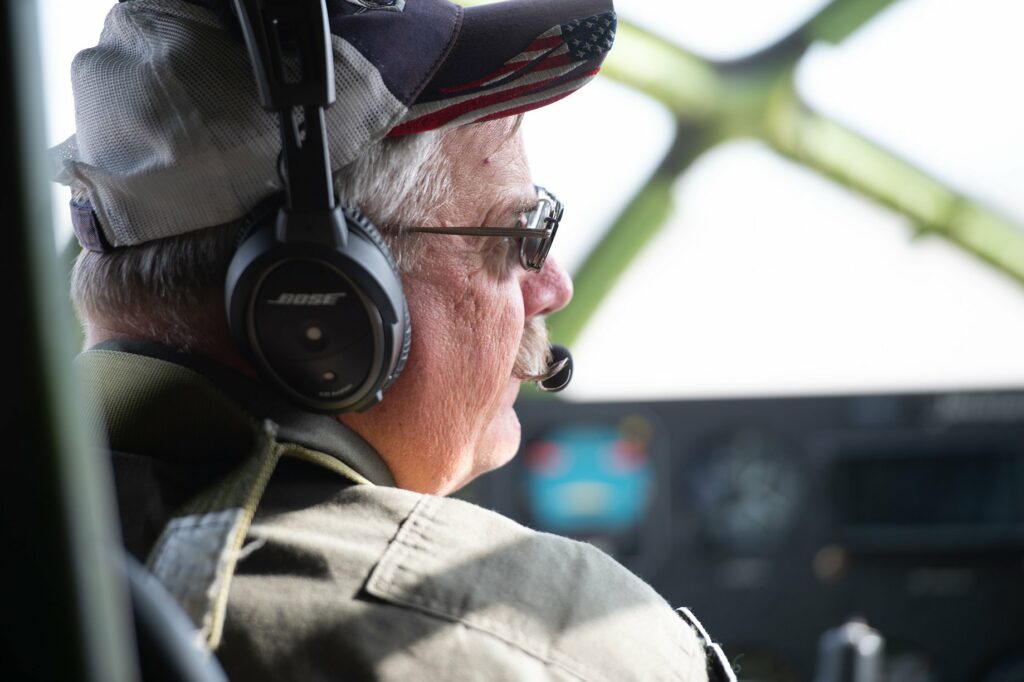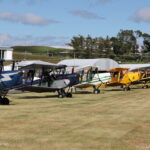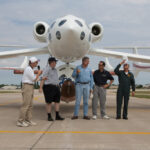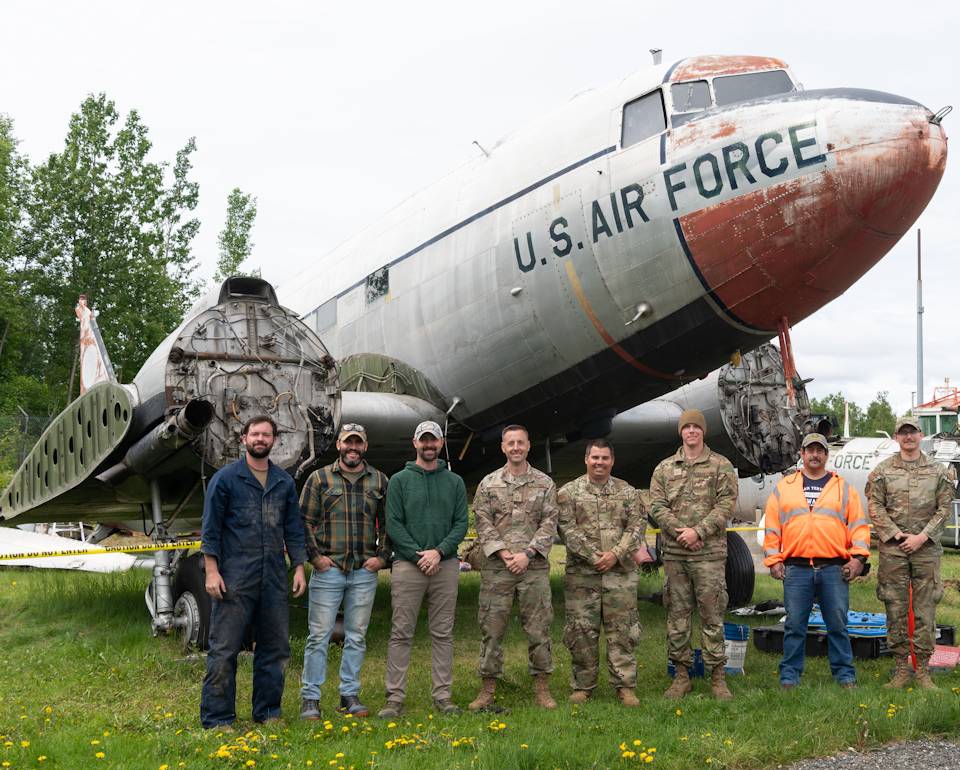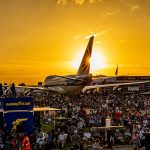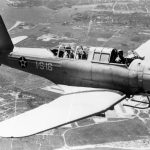From an original article published on www.b29doc.com
Of the nearly 4,000 B-29 Superfortress aircraft built by the United States during World War II, only two remain airworthy today: B-29 Doc, owned by Doc’s Friends, Inc., and B-29 Fifi, part of the Commemorative Air Force (CAF). These two historic aircraft tour the United States, sharing a mission of honoring the men and women who designed, built, flew, and maintained warbirds during WWII.
Since the restoration of B-29 Doc was completed in 2016, the aircraft has accumulated more than 650 flight hours over eight and a half tour seasons. A dedicated team of volunteer flight crew members, including pilots, flight engineers, and scanners, has ensured the safe operation of Doc on hundreds of sorties. Additionally, a larger group of volunteer maintenance and ground personnel work year-round in Doc’s hangar in Wichita, Kansas, to support the mission.
Since flight operations began nine years ago, Mark Novak has been a key member of the volunteer team. In April of this year, Novak achieved a significant milestone, surpassing 500 hours of flight time in B-29 Doc. When combined with the over 300 hours he flew as a pilot in the CAF’s B-29 Fifi, Novak holds the distinction of being the highest-time current B-29 pilot in the world.
Through their dedication and passion, Novak and his fellow volunteers ensure that the legacy of the B-29 Superfortress and the stories of those who served during WWII continue to inspire and educate future generations.
So, how does one become a B-29 pilot, let alone the highest-time pilot among the only two airworthy B-29s? For Mark Novak, it was a matter of being in the right place at the right time.
“In 2011, a good friend of mine, David Oliver, mentioned that Fifi was returning to flight after a three-year re-engine project and needed pilots,” Novak recalled. “I had attended Fifi ground school 15 years earlier and knew that volunteering on the B-29 would be a dream come true. I was retired from the Air Force and serving on the flight crew was exactly what I needed. That was 13 years ago, and I’m so glad I said yes.”
Back in 2016, retired U.S. Air Force B-1 Bomber and KC-135 pilot Mark Novak was among the first to fly Doc during its initial flight-testing phase. Novak, a 1984 graduate of the United States Air Force Academy, served 27 and a half years in the USAF. He joined the B-29 Doc flight crew after five years as an aircraft commander, pilot in command, and instructor pilot for B-29 Fifi with the Commemorative Air Force.
As Doc transitioned from restoration in 2016, through flight testing, and into flight operations a year later, Doc’s Friends, Inc., needed a Chief Pilot to oversee the pilots, flight crews, and movement of the historic warbird.
“Mark tells the story that when we asked our team of pilots who would be interested in serving as Doc’s Chief Pilot, he was the slowest pilot to back away from the table, which, of course, draws smiles and chuckles from those on our team,” said Josh Wells, B-29 Doc’s executive director. “The truth is, Mark is a phenomenal warbird pilot and a great leader, and he’s laser-focused on safety and the long-term operation of B-29 Doc. That’s what made him a natural fit to be our Chief Pilot.”
Novak’s dedication and leadership have been instrumental in ensuring the safe operation and continued legacy of B-29 Doc. His journey from attending ground school to becoming the highest-time B-29 pilot exemplifies the passion and commitment required to keep these historic aircraft flying.
Mark’s passion for flying and preserving the legacy of the men and women who designed, built, flew, and maintained B-29s during WWII and the Korean War fuels his dedication to Doc’s mission. “When we fly Doc to air shows and tour stops across the nation, people have the opportunity to witness our nation’s history in a very unique and up-close way,” Novak explained.
This up-close and unique experience of seeing warbirds like Doc generates inspiration and creates lasting memories, according to Novak.
“I hope that some kid will see what we do with Doc and be inspired to learn to fly or get involved in aviation. Even better, they can learn about our nation’s history and the legacies of the Greatest Generation, and perhaps their parents, grandparents, or great-grandparents who may have served in the warbirds we fly today.”
When Mark isn’t on tour with Doc, he spends his time flying his T-6 Texan and watching his daughter, Natalie, build her flight hours as she launches her aviation career as a recent college graduate.
“A few years ago, I asked my daughter what she wanted to be when she grew up, and she said, ‘Dad, I’d like to be a pilot.’”
When he pressed for more details, he understood her motivation to follow in his footsteps.
“She said, ‘I’ve never really seen you work a day in your life, Dad… and you have a ton of fun doing it!’ She’s right; I’ve been blessed with an aviation career, and I’m honored to fly Doc and other warbirds to honor the men and women who served our country in tough times.”
Recently, while leading cockpit tours during a B-29 Doc tour stop in Virginia, someone asked Mark what he does when he’s not flying Doc.
His response was quick, witty, and true: “I fly something else!”
Flying is what Mark does, and it’s what keeps him going.
As the high-time current B-29 pilot (a designation that he doesn’t take lightly), he’s humbled to be leading Doc’s mission from the left seat of only one of two B-29 Superfortresses still flying today.
“I tell people there are lots of people flying today, but only a few of us get the honor and privilege to fly a historic warbird and national treasure. The men and women who designed, built and flew these airplanes, and then the volunteers who spent nearly two decades in Wichita restoring Doc, are the true heroes. I’m just the guy who gets to sit in the seat and help drive the mission.”
Those volunteers Mark mentions, along with dozens more in the area around Inyokern, CA, are the foundation behind Doc’s present-day mission.
“Without our team of dedicated volunteers—both past and present—we would not be able to do what we do to share the stories of the Greatest Generation and honor their legacies,” Wells continued. “It’s something none of us take for granted each day we are on tour; and without the dedicated work of our maintenance and flight crews, the mission to honor, educate and connect would not be able to take flight. We are forever grateful to Mark, all our pilots, flight crews and volunteers who, as Mark said, are the true heroes of Doc’s current mission.”








